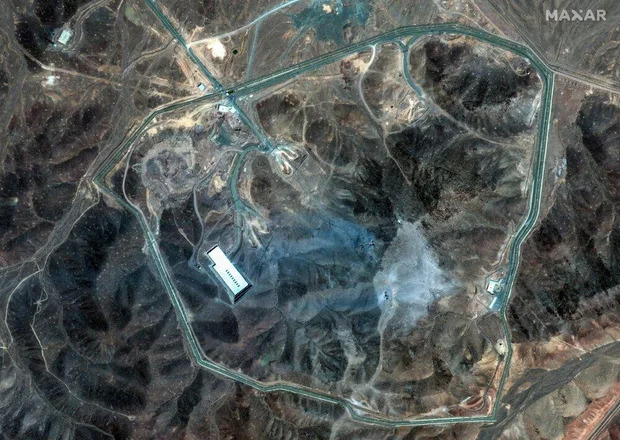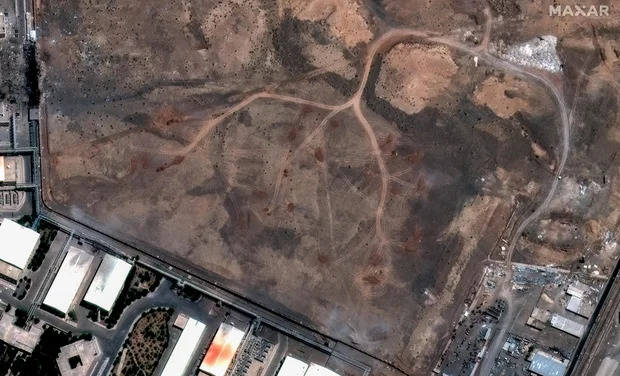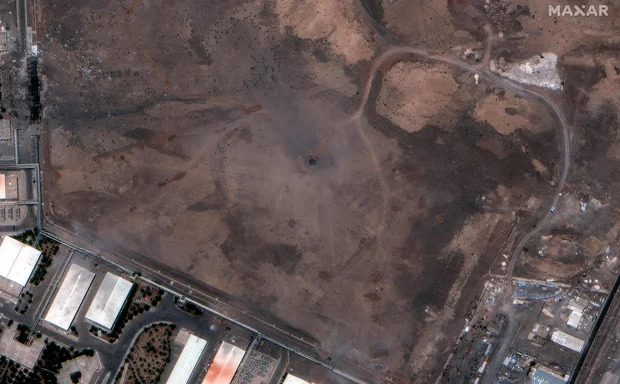US President Donald Trump in the White House Situation Room, during the strikes on Iran’s Key nuclear facilities.
Trump says US strikes caused “monumental damage” to Iran nuclear sites
President Donald Trump insisted Sunday that US strikes had destroyed Iranian nuclear sites, after other officials cautioned that the extent of damage was still unclear.
"Monumental Damage was done to all Nuclear sites in Iran, as shown by satellite images. Obliteration is an accurate term!" Trump wrote on social media, without sharing the images he was referencing.
"The biggest damage took place far below ground level. Bullseye!!!" he added.
New satellite images, released by Planet Labs PBC and Maxar Technologies, offered the first clear visual evidence of the aftermath following the US military strikes on Iran's nuclear facilities.
These images confirm significant physical damage at key sites including Fordo, Natanz, and Isfahan.
The strikes, dubbed "Operation Midnight Hammer" by US officials, targeted these three critical nuclear facilities in the early hours of Sunday, June 22, 2025, local time.
Fordo Nuclear Facility: Craters and Blocked Tunnels
At the Fordo Fuel Enrichment Plant (FEEP) in Qom Province, satellite images from Maxar Technologies, captured on June 22, 2025, reveal significant impact on the mountainside housing the deeply buried underground nuclear site.
The images show several large-diameter holes or craters on the ridge directly above the complex, with at least six probable entry-point craters visible. A layer of ash, likely caused by the airstrikes, is also discernible across a substantial portion of the area.

Several of the tunnel entrances leading to the underground facility appear blocked by dirt following the strikes.
Interestingly, prior to the strikes, images from Planet Labs PBC and Maxar Technologies indicated that Iran had pre-emptively packed some entrance tunnels with dirt and had trucks present at the facility.

The U.S. reportedly dropped multiple 30,000-pound "bunker-buster" bombs, known as Massive Ordnance Penetrator (MOPs), on Fordo, with a total of 14 MOPs deployed across Fordo and Natanz over a 25-minute period.
Despite the visible surface damage, Fordo's strategic importance lies in its deep underground location, buried approximately 300 feet down, housing advanced centrifuges.
This subterranean placement means that surface damage does not fully reveal the internal impact.
The International Atomic Energy Agency (IAEA) Director General Rafael Mariano Grossi has stated that no one, including the IAEA, can fully assess the underground damage at Fordo, despite the visible craters.
Natanz Nuclear Site: Direct Hit on Underground Section

Satellite images clearly show at least one crater at the Natanz site. A distinct hole, approximately 5 meters (16 feet) to 5.5 meters in diameter, is visible directly over the underground portion of the site, which houses critical centrifuge halls.
Reports say that a US B-2 bomber dropped two GBU-57 MOPs on the site.

Isfahan Nuclear Facility: Extensive Building Damage
At the Isfahan site, which was targeted by about a dozen Tomahawk missiles launched from a US submarine, satellite images from Sunday reveal extensive building damage across the facility.
Compared to images taken before the strikes, such as on June 16, buildings appear torched and destroyed. IAEA Director General Rafael Grossi noted that the affected buildings include some related to the uranium conversion process, and entrances to tunnels used for the storage of enriched material also appear to have been hit.
.jpg)

Similar to Fordo, analysis suggests Iran likely filled in tunnels at Isfahan ahead of the strikes, possibly to protect the sites.




